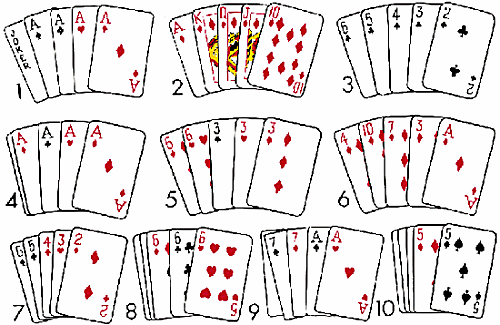
In the game of poker, you should know the basics of the game. You should know the Rules, Variations, Limits, and Tie Hands. These will ensure you play poker smartly and get the most out of your money. The more you know about poker, the more enjoyable it will be. Once you’re comfortable with poker basics, you can master the game of poker in no time. Listed below are some of the most important rules and variations for beginners.
Rules
Poker has many versions. The oldest form is Straight Poker, in which players are dealt all their cards at once, and they bet on their hand. This type of poker has very little room for strategy and is typically the final part of other poker games. Stud Poker, on the other hand, has cards dealt in sets and betting rounds follow. This was the most popular poker game in casinos during the early twentieth century. Today, the most common form of Stud Poker is Seven Card Stud Poker.
Variations
Learning the rules and variations of poker will help you become more familiar with the game, and it will also help you impress other players. Some of the more popular poker variations include Omaha, Lowball, Dr. Pepper, and more. The key is to find one that suits your style and play it well. However, you should also know that poker is a game of skill, so you should play several versions in order to gain a full understanding of how the rules apply to different games.
Limits
When you play poker, betting limits are an important part of the game. They determine the size of the pot you can place bets on and the timing of raises. If you’re a new player, it can be difficult to determine when to raise and when to fold. Poker limits differ from one person to the next, but there are some tips you should keep in mind. Learn to use them to your advantage. Once you’ve learned how to use them, you’ll be ready to move on to the next level.
Tie hands
When two players have the same five-card combination, called a tie hand, they are both eligible to win the pot. Some common examples of tie hands include pairs of twos and sevens. Certain textures on the poker board can increase the likelihood of a tie, though a tie doesn’t always occur. To prevent this from happening, you can try to break the tie by betting. Alternatively, you can try to break a tie by using your high card or by having a lower pair than your opponent.
Insurance
Insurance for poker is a great option for online poker players. It helps you withstand a bad beat by allowing you to withdraw your winnings if you lose a large bet. This option is not suitable for all poker players, but it can help you minimize the negative impact of a bad beat. More poker sites are now considering offering this feature. It may not be for everyone, but it can protect your bankroll and help you avoid losing a lot of money.